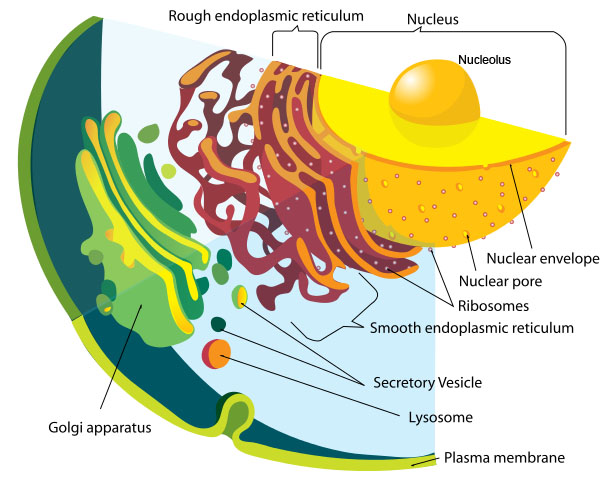1.8 Endoplasmic reticulum
The endoplasmic reticulum (ER) is a complex system of membranes, tubules, cisternae and vesicles, appearing in two types: smooth and rough ER. Smooth ER is comprised of interconnected vesicles and cisternae that do not contain ribosomes. Smooth ER is involved in sterol biosynthesis, detoxification reactions and fatty acid desaturation. Rough ER membranes are associated with ribosomes attached to the outer surface of the membrane. Rough ER has a role in protein biosynthesis and are the sites where amino acids are assembled in a specific sequence to produce polypeptide chains.


